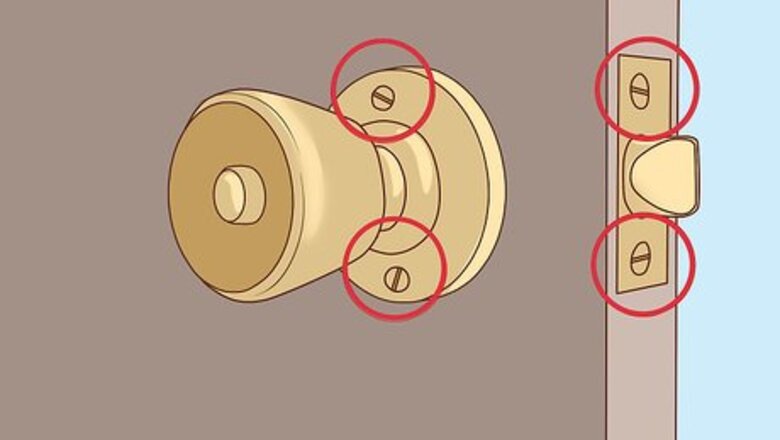
views
- Remove a door handle with exposed screws by undoing the screws and sliding out the door handle. Take out the latch mechanism if you're adding a new door handle.
- Remove handles with recessed fasteners by using a thin screwdriver or Allen wrench in the handle's recessed slot. Use a paperclip if you don't see a screw in the slot.
- Pry or twist off the handle's cover plate, look for any recessed fasteners attached to the handle's base, and undo the mounting screws.
Removing a Handle with Exposed Screws
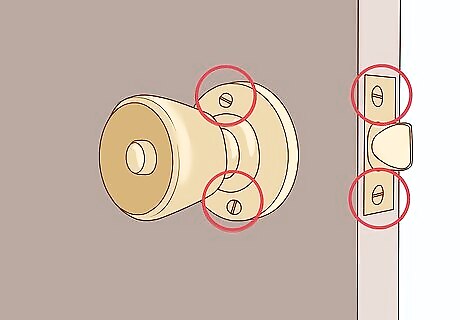
Check for exposed screws on the inside of the door. For most doors, you should see 1 to 3 exposed mounting screws on the side of the door that doesn’t have a keyhole. Look for screws on the cover plate that surrounds the handle. If you don’t see exposed screws on the cover plate, check the neck of the knob or lever. If you don’t see any exposed screws, don't get frustrated! You’ll most likely have to depress or unscrew some type of recessed fastener in the handle’s neck.
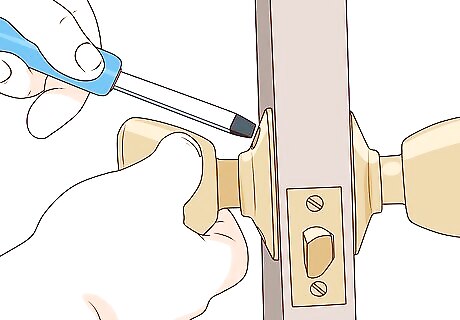
Loosen the mounting screws with a screwdriver. If your handle is secured with exposed screws, simply remove them with a Phillips or flat-head screwdriver. Grab a screwdriver that matches the screws’ head type, then turn them counterclockwise to loosen them. If you plan on reinstalling the door mechanism, store the screws in a safe spot to avoid misplacing them.
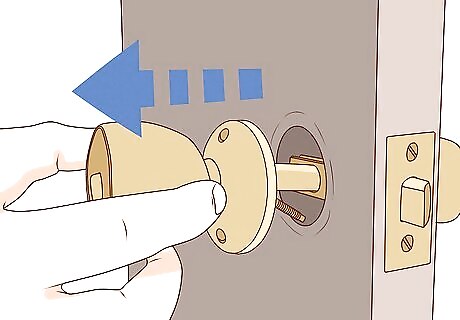
Pull the handles out of the latch assembly. With the mounting screws removed, you should have no problem pulling the knobs or levers out of the latch mechanism. Pull the handles in opposite directions to slide them out of the mechanism, then set them aside.

Remove the latch mechanism if you're installing a new handle. Find the screws on the side of the door that secure the latch plate. Take out the screws, then carefully pry off the plate with a flat-head screwdriver. With the plate removed, you can now pull the latch mechanism through the side of the door. The latch is the bolt that fits into the strike plate on the door frame and keeps the door closed.Tip: If you’re replacing the door mechanism, measure the existing holes in your door. Bring your measurements to the hardware store, and purchase a new set that fits your door’s dimensions.
Loosening Recessed Fasteners
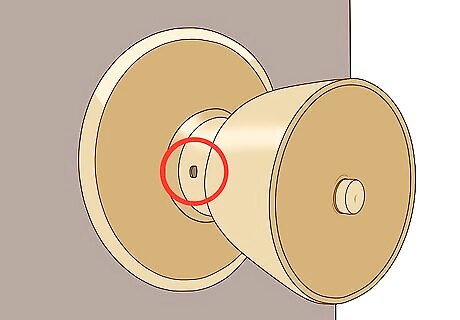
Look for a recessed slot in the shaft of the handle. If your door has no visible screws, check the neck of the knob or lever for a small hole. If there’s one present, you’ll be able to depress a button or loosen a small screw inside the hole to release the handle.Tip: Use a flashlight to check inside the hole for a flat-head, Phillips head, or hex-head screw.
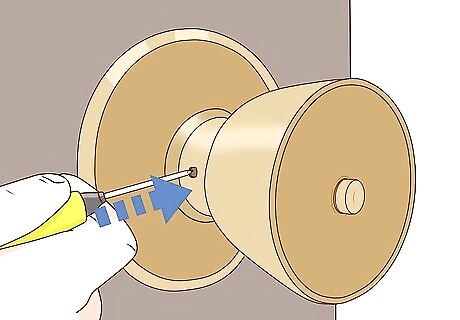
Depress a button with a paperclip or thin tool if there’s no screw. If you don’t see a screw head inside the slot, straighten a paperclip or grab a thin, pointed tool, such as an awl. Insert the paperclip or tool into the slot as you gently pull the knob away from the door. The paperclip or tool will spring the door mechanism, allowing you to pull out the handles.

Remove a recessed screw with a narrow screwdriver. If you see a Phillips or flat-head screw inside the hole, grab a screwdriver that’s small enough to reach it. Turn the screw counterclockwise to loosen it and release the handle. You should be able to pull off the handles after removing the recessed screw. If the spindle that connects the handles doesn't come out, you might have to pry off or unscrew the cover plate behind the handle in order to access mounting screws.
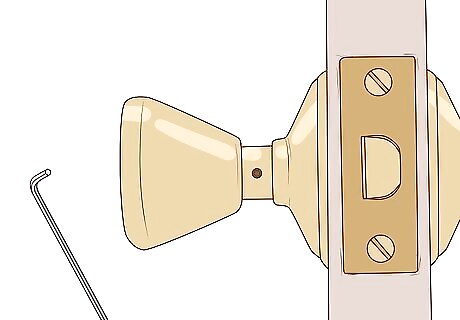
Use an Allen wrench to loosen a hex-head screw. If you see a screw with a head shaped like a hexagon, you’ll need an Allen wrench small enough to access it. Insert the wrench into the slot, then turn the wrench counterclockwise to loosen and remove the screw. If you don’t have an Allen wrench, purchase a fold-up pocket set with variously sized Allen wrenches at a hardware or home improvement store.
Removing a Handle with a Cover Plate
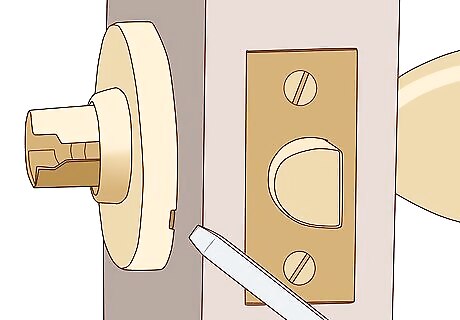
Pry off the cover plate if it has a notch. Check around the plate where it meets the door for a small notch or cut-out. If you see one, insert a flat-head screwdriver into the notch, then gently pry off the plate. The cover plate behind the door knob or lever may be round or rectangular, depending on the handle’s design. After prying off the cover plate, you should see screws that hold the inner mechanism together.
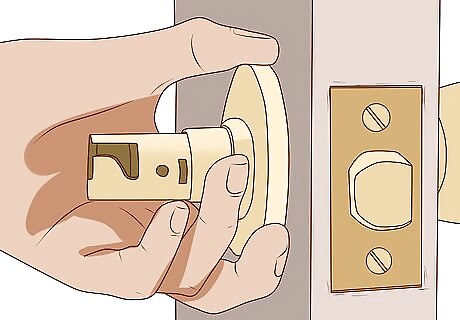
Try turning a round cover plate counterclockwise. If you don’t see a notch and the cover plate is round, try turning it counterclockwise with a wrench or by hand. After loosening the cover plate, slide it down the neck of the door handle to access the mounting screws behind it.

Check for any recessed fasteners that were hidden by the plate. If the door knob is still in place, you might have trouble fitting a screwdriver between the cover plate and the mounting screws. See if there’s a slot with a recessed fastener that was concealed by the cover plate. If so, insert a paperclip or loosen a small screw to remove the handle. For some designs, there's a visible slot that releases the outer handle as well as screws behind the cover plate that hold the inner mechanism together.Note: For a door with a lever, you should be able to slide the cover plate down the shaft of the lever and out of the way.
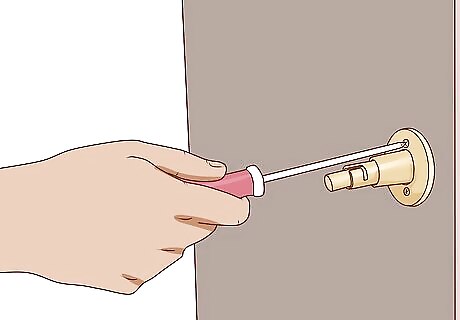
Loosen the screws that were concealed by the cover plate. Turn the mounting screws counterclockwise and pull them out of the door mechanism. You should now be able to pull out the handles, if they're still in place, and the spindle that connects them.
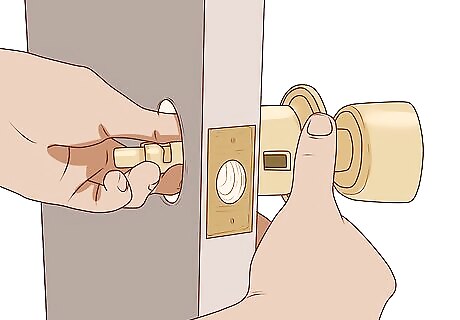
Remove the latch plate and latch bolt, if necessary. If want to remove the entire door mechanism, loosen the screws over the plate on the side of the door. Then carefully pry off the latch plate and pull out the latch mechanism.




















Comments
0 comment